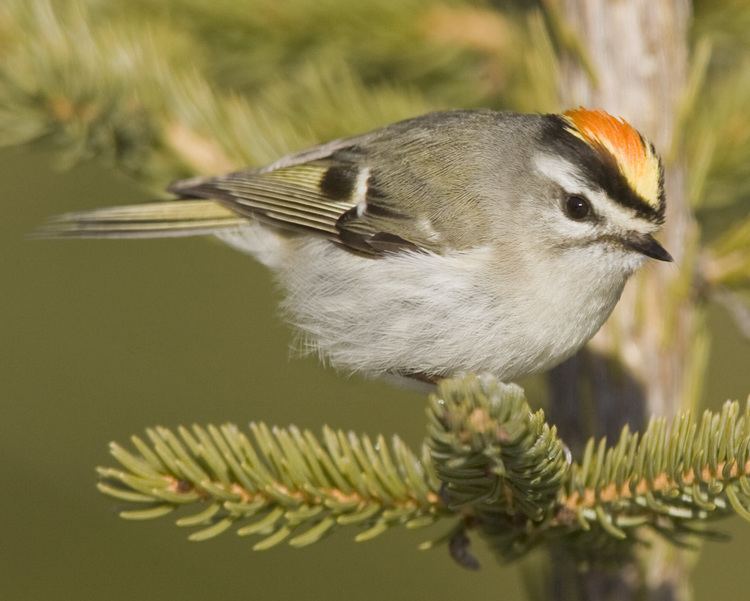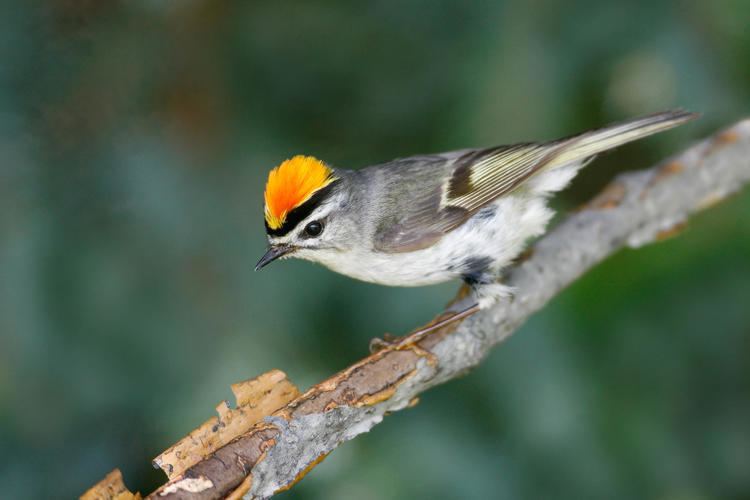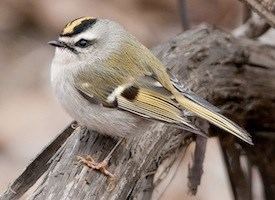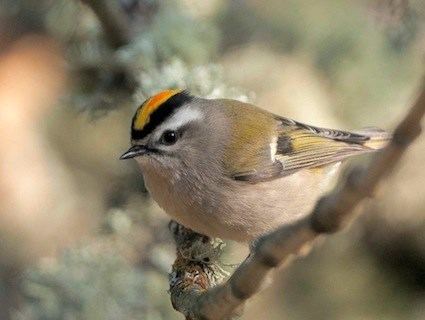Genus Regulus Phylum Chordata Rank Species | Family Regulidae Scientific name Regulus satrapa Higher classification Kinglet Order Passerine | |
 | ||
Similar Kinglet, Ruby‑crowned kinglet, Bird, Brown creeper, Yellow‑rumped warbler | ||
Golden crowned kinglet in maine
The golden-crowned kinglet (Regulus satrapa) is a very small songbird.
Contents
Adults are olive-gray on the upperparts with white underparts, with thin bills and short tails. They have white wing bars, a black stripe through the eyes and a yellow crown surrounded by black. The adult male has an orange patch in the middle of the yellow crown.

Their breeding habitat is coniferous forests across Canada, the northeastern and western United States, Mexico and Central America. They nest in a well-concealed hanging cup suspended from a conifer branch.

These birds migrate to the United States. Some birds are permanent residents in coastal regions and in the southern parts of their range. Northern birds remain further north in winter than the ruby-crowned kinglet.

They forage actively in trees or shrubs, mainly eating insects, insect eggs and spiders.
They give a series of high-pitched calls on a single note, and tend not to fear human approach.
Golden crowned kinglet
Description
Adults are olive-gray on the upperparts with white underparts, with thin bills and short tails. They have white wing bars, a black stripe through the eyes and a yellow crown surrounded by black. The adult male has an orange patch in the middle of the yellow crown. The juvenile is similar to the adult, but with a browner back and without the yellow crown. This is one of the smallest passerines in North America. Its length, at 8 to 11 cm (3.1 to 4.3 in), is probably the shortest of any American passerine. However, its weight, which averages around 5.9 g (0.21 oz), with a range of 4 to 7.8 g (0.14 to 0.28 oz), is marginally more on average than the American bushtit and black-tailed gnatcatcher.
Distribution
Golden-crowned kinglet is a widespread North American bird, breeding in many US states, and over much of Canada, and wintering across much of the continent south to Florida, Texas and Mexico. It also occurs in isolated mountain ranges in southern Mexico and Guatemala, where it is represented by separate subspecies.
Taxonomy
The kinglets are a small group of birds sometimes included in the Old World warblers, but frequently given family status, especially as recent research showed that, despite superficial similarities, the crests are taxonomically remote from the warblers. The names of the family, Regulidae, and its only genus, Regulus, are derived from the Latin regulus, a diminutive of rex, "a king", and refer to the characteristic orange or yellow crests of adult kinglets.
There are three migratory subspecies in the United States and Canada, differing in size, bill length, back and rump colours, wing-bar width and colour, and length of supercilium:
The subspecies "amoenus" has been synonymised with apache as the distinction between these populations are obscured by individual variation.
Two other (non-migratory) subspecies occur south of the bird's core range, although these are weakly differentiated from each other and so are perhaps best synonymised:
Hybridization with ruby-crowned kinglet has been reported to have possibly occurred.
